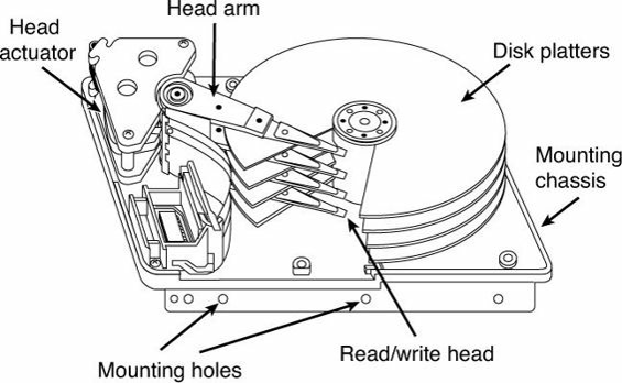Hardware Reference
In-Depth Information
Chapter 9. Hard Disk Storage
Definition of a Hard Disk
The hard disk drive (HDD) is one of the most important and yet mysterious parts of a computer
system. HDDs are sealed units used for nonvolatile data storage.
Nonvolatile
, or semipermanent,
storage means that the storage device retains the data even when no power is supplied. Because
HDDs store crucial programming and data, the consequences of failures are usually serious. To build,
maintain, service, or upgrade a PC system properly, it is important to know how hard disks function.
HDDs contain rigid, circular platters, usually constructed of aluminum or glass (see
Figure 9.1
)
.
These platters can't bend or flex—hence the term
hard disk
. In most drives you can't remove the
platters, which is why they are sometimes called
fixed
disk drives.
Figure 9.1. Hard disk heads and platters.
Note
HDDs are sometimes referred to as
Winchester drives
. This term dates back to 1973, when
IBM introduced the model 3340 drive, which had 30MB of fixed platter and 30MB of
removable platter storage on separate spindles. The drive was code-named Winchester by
project leader Ken Haughton because the original capacity designation (30-30) sounded like
the popular .30-30 (caliber-grains of charge) cartridge used by the Winchester 94 rifle
introduced in 1895. The original 3340 “Winchester” drive was the first to use a sealed
head/disk assembly, and the name has since been applied to subsequent drives using similar
technology.
Hard Drive Advancements
The first hard drive appeared in 1956. One year later in 1957, Cyril Northcote Parkinson published








